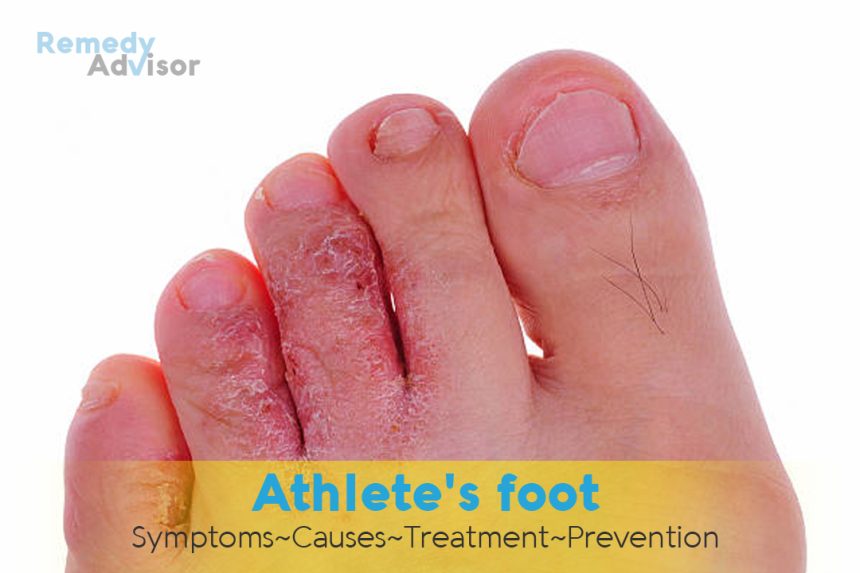What is it
Athlete’s foot is the most common infection of the skin. Despite its popular name, you don’t have to be an athlete to contract it normally harmless fungal infection which develop in places other than gym showers or locker rooms. Once you have athletes foot it can be unusually persistent. It occurs far more frequently among men than women and is more common in hot humid weather.
Symptoms
- Scaling and peeling between the toes.
- Redness, itching, the appearance of tiny blisters, and scaling along the sides and soles of the feet.
- In severe cases cracks between the toes con develop, and the skin becomes soft and painful.
- If toenails are infected, they may become discolored and begin to thicken, scale, and crumble.
What causes it
Trichophyton is the name of the most common group of fungi that causes athlete’s foot. (The similarly itchy condition around the groin known as Jock itch is also often due to Trichophyton). The fungus thrives best in warm, humid, surrounded locations. Snug cozy, poorly aerated shoes and moist, sweaty socks offer an ideal breeding ground. Your chances of catching athlete’s foot from another person are slight, but the fungus can be spread by fragments of affected skin that have been shed.
What if you do nothing
Athlete’s foot should not be ignored. The condition can be easily treated, but if allowed to progress, it can be extremely bothersome and resistant to treatment, and can lead to a possible bacterial infection.
Home remedies
Once you have determined that athlete’s foot is the problem, you should treat it immediately.
The usual treatment is an over-the-counter antifungal cream or lotion containing antifungal agents such as clotrimazole. Apply the cream on the soles of your feet. For between your toes, use the lotion only; it is more quickly absorbed than the cream and won’t trap moisture, which could prolong the problem.
In most cases three consecutive days of treatment should clear up the symptoms of athlete’s foot (though weeks of treatment are usually necessary to prevent a relapse).
Prevention
Some people are more susceptible to the athlete’s foot fungus than others. If you are sus- ceptible, follow these commonsense rules, especially when you’re very active and your feet tend to perspire.
Keep your feet clean
Daily washing with soap and water is a good idea, but be sure you dry your feet thoroughly, especially between the toes (you can use a hair dryer on low heat).
After drying, apply antifungal lotion
Follow this along with an antifungal foot powder which does not consists of cornstarch; cornstarch may motivate fungal growth.
Choose ventilated shoes
This allows your feet to breathe. Don’t wear the same pair every day; air your shoes after you wear them.
When you can, go barefoot
The next best thing to bare feet is sandals. But when you wear shoes, wear socks, too—preferably ones that wick away moisture and keep your feet dry.
Change your socks daily
Wear clean socks, preferably ones that wick away moisture.







